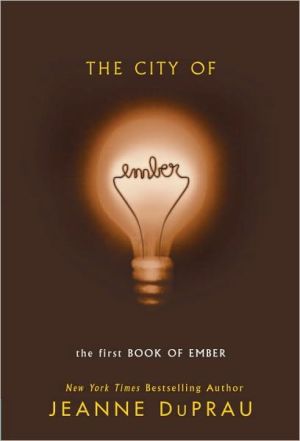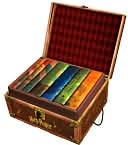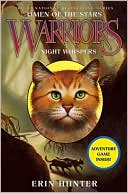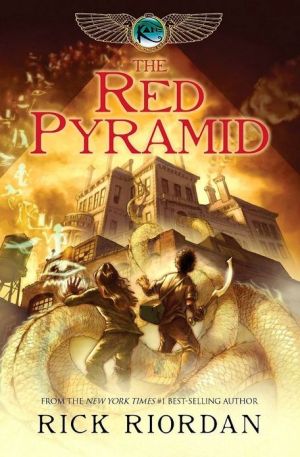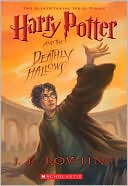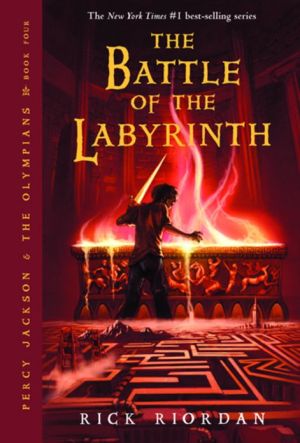The City of Ember (Books of Ember Series #1)
The city of Ember was built as a last refuge for the human race. Two hundred years later, the great lamps that light the city are beginning to flicker. When Lina finds part of an ancient message, she’s sure it holds a secret that will save the city. She and her friend Doon must decipher the message before the lights go out on Ember forever! This stunning debut novel offers refreshingly clear writing and fascinating, original characters.\ \ \ In the year 241,...
Search in google:
FOR USE IN SCHOOLS AND LIBRARIES ONLY. This series explores the possibility of a post-apocalyptic world from the point of the disaster that changes everything to the one known surviving settlement of Ember, an underground city slowly dying as electricityPublishers WeeklyIn her electric debut, DuPrau imagines a post-apocalyptic underground world where resources are running out. The city of Ember, "the only light in the dark world," began as a survival experiment created by the "Builders" who wanted their children to "grow up with no knowledge of a world outside, so that they feel no sorrow for what they have lost." An opening prologue describes the Builders' intentions-that Ember's citizens leave the city after 220 years. They tuck "The Instructions" to a way out within a locked box programmed to open at the right time. But the box has gone astray. The story opens on Assignment Day in the year 241, when 12-year-olds Lina Mayfleet and Doon Harrow draw lots for their jobs from the mayor's bag. Lina gets "pipeworks laborer," a job that Doon wants, while Doon draws "messenger," the job that Lina covets, and they trade. Through their perspectives, DuPrau reveals the fascinating details of this subterranean community: as Doon repairs leaks deep down among the Pipeworks, he also learns just how dire the situation is with their malfunctioning generator. Meanwhile, the messages Lina carries point to other sorts of subterfuge. Together, the pair become detectives in search of the truth-part of which may be buried in some strange words that were hidden in Lina's grandmother's closet. Thanks to full-blooded characters every bit as compelling as the plot, Lina and Doon's search parallels the universal adolescent quest for answers. Readers will sit on the edge of their seats as each new truth comes to light. Ages 10-13. (May) Copyright 2003 Reed Business Information.
The Instructions When the city of Ember was just built and not yet inhabited, the Chief Builder and the Assistant Builder, both of them weary, sat down to speak of the future.\ “They must not leave the city for at least two hundred years,” said the Chief Builder. “Or perhaps two hundred and twenty.”\ “Is that long enough?” asked his Assistant.\ “It should be. We can’t know for sure.”\ “And when the time comes,” said the Assistant, “how will they know what to do?”\ “We’ll provide them with instructions, of course,” the Chief Builder replied.\ “But who will keep the instructions? Who can we trust to keep them safe and secret all that time?”\ “The mayor of the city will keep the instructions,” said the Chief Builder. “We’ll put them in a box with a timed lock, set to open on the proper date.”\ “And will we tell the mayor what’ s in the box?” the Assistant asked.\ “No, just that it’s information they won’t need and must not see until the box opens of its own accord.”\ “So the first mayor will pass the box to the next mayor, and that one to the next, and so on down through the years, all of them keeping it secret, all that time?”\ “What else can we do?” asked the Chief Builder. “Nothing about this endeavor is certain. There may be no one left in the city by then or no safe place for them to come back to.”\ So the first mayor of Ember was given the box, told to guard it carefully, and solemnly sworn to secrecy. When she grew old, and her time as mayor was up, she explained about the box to her successor, who also kept the secret carefully, as did the next mayor. Things went as planned for many years. But the seventh mayor of Ember was less honorable than the ones who’d come before him, and more desperate. He was ill–he had the coughing sickness that was common in the city then–and he thought the box might hold a secret that would save his life. He took it from its hiding place in the basement of the Gathering Hall and brought it home with him, where he attacked it with a hammer.\ But his strength was failing by then. All he managed to do was dent the lid a little. And before he could return the box to its official hiding place or tell his successor about it, he died. The box ended up at the back of a closet, shoved behind some old bags and bundles. There it sat, unnoticed, year after year, until its time arrived, and the lock quietly clicked open.\ Chapter 1\ Assignment Day In the city of Ember, the sky was always dark. The only light came from great floodlamps mounted on the buildings and at the tops of poles in the middle of the larger squares. When the lights were on, they cast a yellowish glow over the streets; people walking by threw long shadows that shortened and then stretched out again. When the lights were off, as they were between nine at night and six in the morning, the city was so dark that people might as well have been wearing blindfolds.\ Sometimes darkness fell in the middle of the day. The city of Ember was old, and everything in it, including the power lines, was in need of repair. So now and then the lights would flicker and go out. These were terrible moments for the people of Ember. As they came to a halt in the middle of the street or stood stock still in their houses, afraid to move in the utter blackness, they were reminded of something they preferred not to think about: that some day the lights of the city might go out and never come back on.\ But most of the time life proceeded as it always had. Grown people did their work, and younger people, until they reached the age of twelve, went to school. On the last day of their final year, which was called Assignment Day, they were given jobs to do.\ The graduating students occupied Room 8 of the Ember School. On Assignment Day of the year 241, this classroom, usually noisy first thing in the morning, was completely silent. All twenty-four students sat upright and still in the desks they had grown too big for. They were waiting.\ The desks were arranged in four rows of six, one behind the other. In the last row sat a slender girl named Lina Mayfleet. She was winding a strand of her long, dark hair around her finger, winding and unwinding it again and again. Sometimes she plucked at a loose thread on her ragged cape or bent over to pull on her socks, which were loose and tended to slide down around her ankles. One of her feet tapped the floor softly.\ In the second row was a boy named Doon Harrow. He sat with his shoulders hunched, his eyes squeezed shut in concentration, and his hands clasped tightly together. His hair looked rumpled, as if he hadn’t combed it for a while. He had dark, thick eyebrows, which made him look serious at the best of times, and when he was anxious or angry came together to form a straight line across his forehead. His brown corduroy jacket was so old that its ridges had flattened out.\ Both the girl and the boy were making urgent wishes. Doon’s wish was very specific. He repeated it over and over again, his lips moving slightly, as if he could make it come true by saying it a thousand times. Lina was making her wish in pictures rather than in words. In her mind’s eye, she saw herself running through the streets of the city in a red jacket. She made this picture as bright and real as she could.
\ Publishers WeeklyIn her electric debut, DuPrau imagines a post-apocalyptic underground world where resources are running out. The city of Ember, "the only light in the dark world," began as a survival experiment created by the "Builders" who wanted their children to "grow up with no knowledge of a world outside, so that they feel no sorrow for what they have lost." An opening prologue describes the Builders' intentions-that Ember's citizens leave the city after 220 years. They tuck "The Instructions" to a way out within a locked box programmed to open at the right time. But the box has gone astray. The story opens on Assignment Day in the year 241, when 12-year-olds Lina Mayfleet and Doon Harrow draw lots for their jobs from the mayor's bag. Lina gets "pipeworks laborer," a job that Doon wants, while Doon draws "messenger," the job that Lina covets, and they trade. Through their perspectives, DuPrau reveals the fascinating details of this subterranean community: as Doon repairs leaks deep down among the Pipeworks, he also learns just how dire the situation is with their malfunctioning generator. Meanwhile, the messages Lina carries point to other sorts of subterfuge. Together, the pair become detectives in search of the truth-part of which may be buried in some strange words that were hidden in Lina's grandmother's closet. Thanks to full-blooded characters every bit as compelling as the plot, Lina and Doon's search parallels the universal adolescent quest for answers. Readers will sit on the edge of their seats as each new truth comes to light. Ages 10-13. (May) Copyright 2003 Reed Business Information.\ \ \ \ \ VOYAWhen the builders of Ember planned the underground city, they provided a storehouse of goods for the residents' survival and a power plant to supply light to the town. Now, generations later, the supplies are dangerously low, and the lights are beginning to flicker. Ember is a socialist society, where even jobs are randomly assigned to residents. Nobody knows what lies without the walls, and everyone is too frightened to find out. Although directions on how to exit the city were entrusted to the first mayor of Ember, they were misplaced until Lina, an orphan and descendant of that mayor, finds a torn and mangled paper. Lina enlists fellow twelve-year-old Doon to aid in putting together the pieces. They are surprised to discover the missing instructions. After the teens are falsely accused of illegal activities and hunted by the police, they decide to elude capture by following the directions and leaving Ember. It will not take readers long to discover that Ember is a city-size bomb shelter and that a whole other world exists outside its walls. While Ember is colorless and dark, the book itself is rich with description. DuPrau uses the puzzle, suspenseful action, and lots of evil characters to entice readers into the story. They will find the teen characters believable and gutsy. Part mystery, part adventure story, this novel provides science fiction for those who do not like science fiction. The end of the book hints at a possible sequel. PLB \ — Chris Carlson\ \ \ School Library JournalGr 4-7-DuPrau debuts with a promisingly competent variation on the tried-and-true "isolated city" theme. More than 200 years after an unspecified holocaust, the residents of Ember have lost all knowledge of anything beyond the area illuminated by the floodlamps on their buildings. The anxiety level is high and rising, for despite relentless recycling, food and other supplies are running low, and the power failures that plunge the town into impenetrable darkness are becoming longer and more frequent. Then Lina, a young foot messenger, discovers a damaged document from the mysterious Builders that hints at a way out. She and Doon, a classmate, piece together enough of the fragmentary directions to find a cave filled with boats near the river that runs beneath Ember, but their rush to announce their discovery almost ends in disaster when the two fall afoul of the corrupt Mayor and his cronies. Lina and Doon escape in a boat, and after a scary journey emerge into an Edenlike wilderness to witness their first sunrise-for Ember, as it turns out, has been built in an immense cavern. Still intent on saving their people, the two find their way back underground at the end, opening the door for sequels. The setting may not be so ingeniously envisioned as those of, say, Joan Aiken's Is Underground (Turtleback, 1995) and Lois Lowry's The Giver (Houghton, 1993), but the quick pace and the uncomplicated characters and situations will keep voracious fans of the genre engaged.-John Peters, New York Public Library Copyright 2003 Reed Business Information.\ \ \ \ \ Kirkus ReviewsThis promising debut is set in a dying underground city. Ember, which was founded and stocked with supplies centuries ago by "The Builders," is now desperately short of food, clothes, and electricity to keep the town illuminated. Lina and Doon find long-hidden, undecipherable instructions that send them on a perilous mission to find what they believe must exist: an exit door from their disintegrating town. In the process, they uncover secret governmental corruption and a route to the world above. Well-paced, this contains a satisfying mystery, a breathtaking escape over rooftops in darkness, a harrowing journey into the unknown and cryptic messages for readers to decipher. The setting is well-realized with the constraints of life in the city intriguingly detailed. The likable protagonists are not only courageous but also believably flawed by human pride, their weaknesses often complementing each other in interesting ways. The cliffhanger ending will leave readers clamoring for the next installment. (Fiction. 9-13)\ \
